| Zeitschrift Umělec 2004/3 >> Pas to the civilian zone | Übersicht aller Ausgaben | ||||||||||||
|
|||||||||||||
Pas to the civilian zoneZeitschrift Umělec 2004/301.03.2004 Jiří Ptáček | info | en cs |
|||||||||||||
|
Production of Contemporary Activities, (Produkce aktivit současnosti -- PAS) dates back to 2000. Its goal is to enter into the “civil/citizen zone.” In June, 2004, PAS invited six artists to prepare instructions to make art. Anatolij Osmolovskij (Russia), Liam Gillick (Great Britain), Monika Sosnowská (Poland), Oliver Musovik (Macedonia), Roman Ondák (Slovakia) and Swetlana Hegerová (Germany) sent their manuals to local manufacturers. Display Gallery in Prague presented the completed works in an exhibition entitled Czech Made. Tomáš Vaněk, a founding member, addressed questions about that exhibition and future PAS projects.
Not long ago you came up with a new project. We could purchase from you two curious posters. Do they somehow represent a beginning of some kind of long-term activity? How is that going to evolve? PAS has begun publishing as Paspress. The first thing we published was a catalogue for Jirka Skála’s exhibition at the Display Gallery, Hygiene. It was printed as a mimeograph—the same machine that we used for the Paspress project at the Palais de Tokyo in Paris. Jirka Skála, Ondřej Brody and Evžen Šimera took notes on what was going on around them at the time, and immediately printed and distributed it. As soon as one edition was ready, they set about to the next one, and so forth. We also used the mimeograph in 2003 to print a special new year’s calendar with Jesper Alvaer. I am talking about all this because you were asking about Neosamizdat, that we began to print this year as an edition under that name. This is basically a poster periodical that should be put out every two months. It seems important enough to produce something with a certain regularity that isn’t just valued as information. More simply put: the concepts will be prepared with a variety of people, not just from the art scene, and directly for this medium. The first poster was made by Zbyněk Baladrán about the invasion of weeds in the countryside. Others are being prepared by Honza Uhlíř and then Boris Ondreička. These posters are planographic, like architectonic plans, and reproductions are distributed at 8,- Kč each. Conceptually, we are aiming towards cheapness, commonness and production simplicity. In June, 2004, you prepared a project for the Display gallery called Czech Made. You asked artists to write instructions for the realization of artistic works. You gave these instructions to people with no experience with art, to apply them. What effect do you promise? It should be said that the realization of this project took time. So from a certain point of view we can talk specifically about postproduction. The reason for this time gap was that we were trying to find money, a place to present the project, and finally specific activities we were each involved in. For me there was the Jindřich Chalupecký award, the preparation of my catalogue, the exhibition and the consequent three-month sojourn to San Francisco, Jirka spent a year at the Palais de Tokyo, and Vítek began to intensively preparing the Tranzit project. But back to the subject. Well, of course you can say that the realization of an artistic work including that you ask to have it made by someone else, is completely normal. Many artists have something made or produced. We were interested in exhibiting the manufacturing aspect of the emergence of an artistic work as an equal part of that production structure, acknowledging manufacturers as an equal part of the project. That’s the fundamental code to the Czech Made project. As for addressing foreign artists, our goal was that the manufacturers’ and beneficiaries’ relations be more visible, sensitive and able to exhibit. The selection itself of artists was part of the whole project’s bridging concept. How do you imagine manufacturing activity in the present. Do you define some way you want to go? Do you miss activities on the artistic scene? What alternative towards normal manufacturing structures do you want to find in future? If you miss activities on the artistic scene, there is nothing more simple than to produce it oneself. That’s the sort of impulse from which PAS emerged. I can‘t remember if we used the word, alternative, in the context of PAS. I instead tend to speak with Vítek and Jirka about common manufacturing structures, individual products and distribution systems as they relate to contemporary life and art. We document our relationships in the form of fragmentary evidence. Through the realm of art we enter other civil zones and through the civil zone we enter art. We believe in the function of Neosamizdat and home seminars. The last few months you spent in England. After coming back you suggested that you have some new subjects for PAS. What are these? I stayed and worked in the Delfina Studio and I did some project for the Camden Arts Centre in London. The first event I visited after coming back from London was the self publishing fair, the first part of the project Publish and be dammned. There I met its organizers, Emily Pethick and Chris Hammonds. I told them about the activities of PAS and our Neosamizdat. In the end it became part of the second half of the project, the exhibition in the Cubitt Gallery, where a kind of a public reading room emerged of printed materials offered in the first part. The whole project then moved to Manchester, later on it will be presented in NYC and we have discussed the possibility of having it in Prague next year. Next, we managed to install and activate one display window in London at 15 Borough High Street, where I exhibited a special map of London. The next shows in there are of Emily and Chris’ work. And another actual cooperation concerns the London artist Edward Ward, who is working on a Neosamizdat placard for us. It should be ready by the end of the year.
01.03.2004
Empfohlene Artikel
|
|||||||||||||
|
04.02.2020 10:17
Letošní 50. ročník Art Basel přilákal celkem 93 000 návštěvníků a sběratelů z 80 zemí světa. 290 prémiových galerií představilo umělecká díla od počátku 20. století až po současnost. Hlavní sektor přehlídky, tradičně v prvním patře výstavního prostoru, představil 232 předních galerií z celého světa nabízející umění nejvyšší kvality. Veletrh ukázal vzestupný trend prodeje prostřednictvím galerií jak soukromým sbírkám, tak i institucím. Kromě hlavního veletrhu stály za návštěvu i ty přidružené: Volta, Liste a Photo Basel, k tomu doprovodné programy a výstavy v místních institucích, které kvalitou daleko přesahují hranice města tj. Kunsthalle Basel, Kunstmuseum, Tinguely muzeum nebo Fondation Beyeler.
|



















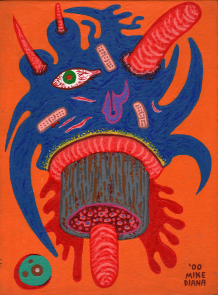




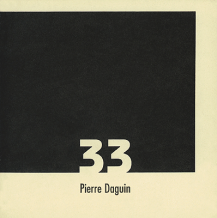
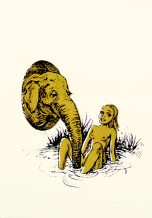
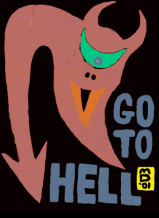
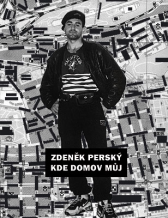


 Potsdamer Str. 161 | Neu Divus in Zwitschermaschine, galerie und buchhandlug in Berlin! | Mit U2 nach Bülowstraße
Potsdamer Str. 161 | Neu Divus in Zwitschermaschine, galerie und buchhandlug in Berlin! | Mit U2 nach Bülowstraße
Kommentar
Der Artikel ist bisher nicht kommentiert wordenNeuen Kommentar einfügen